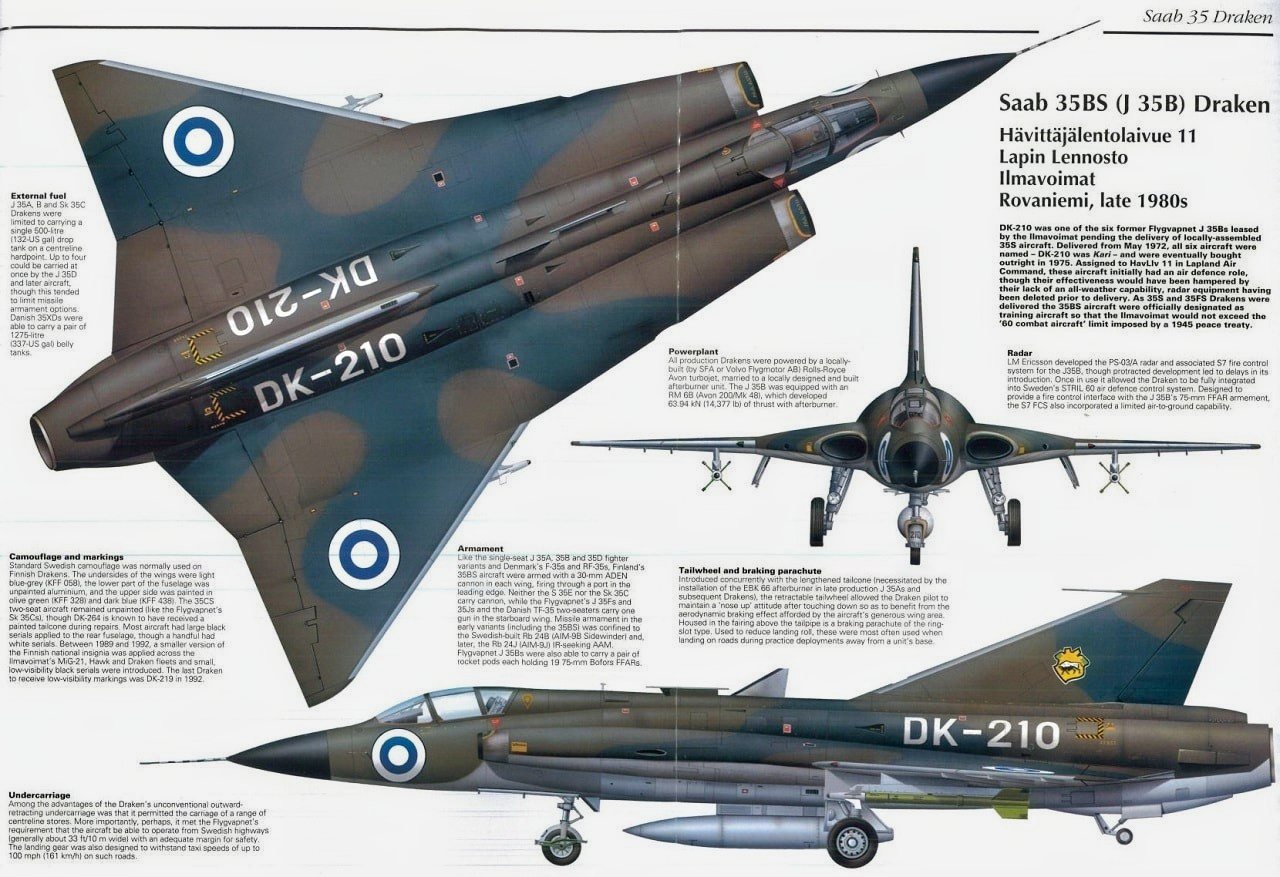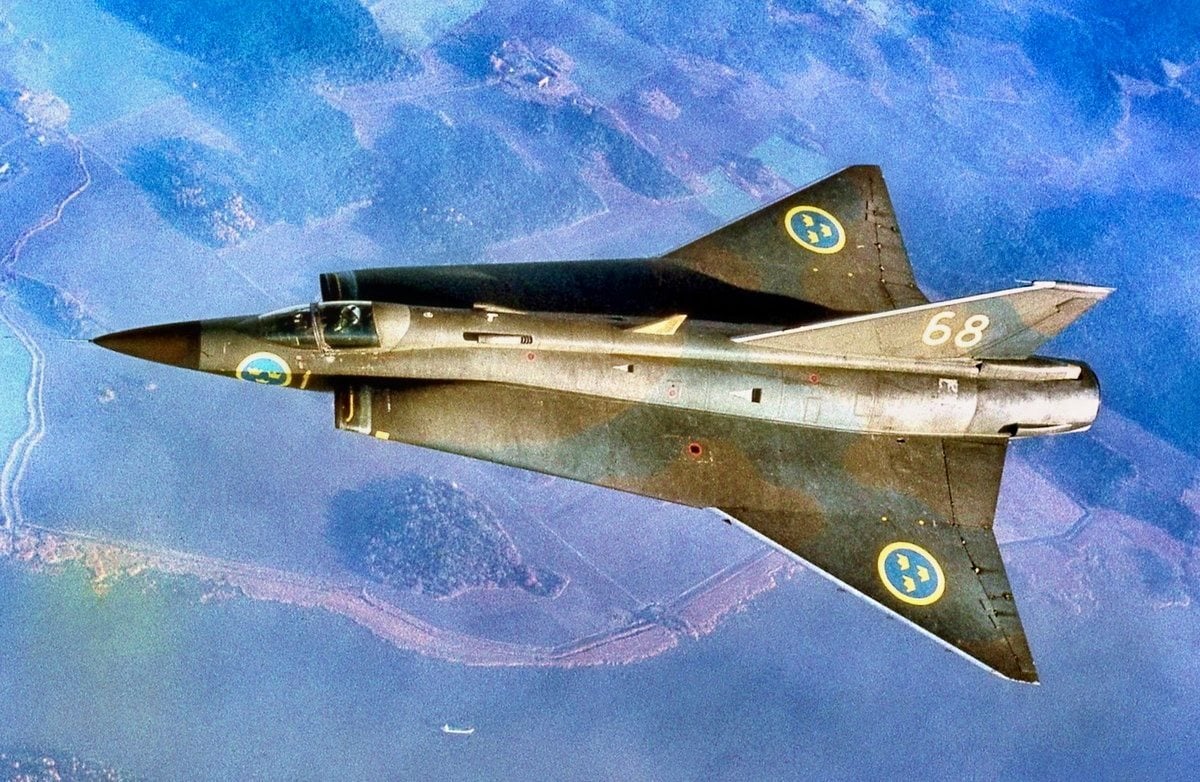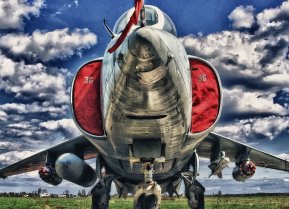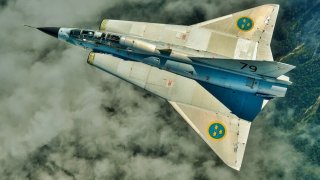Saab 35 Draken: The Fighter Jet Russia Never Wanted to Battle
The Saab 35 Draken is regarded as a success – and an innovative milestone in aviation history. Today, the National Test Pilot School in Mojave, California, operates a fleet of six Drakens.
The Saab 35 Draken, also known as ‘The Kite’ or ‘The Dragon,’ was the first Western European-built combat aircraft capable of breaking the sound barrier.
Actually, the Draken busted through Mach 2. And the Draken had a few other firsts; the first combat aircraft ever designed with a double delta wing configuration, the tailless Draken is the first known aircraft to perform the Cobra maneuver.
The Draken was originally designed as an interceptor aircraft – but was regarded as a capable dogfighter too. During the tense years at the beginning of the Cold War, Sweden had wanted a jet capable of intercepting enemy bombers, as well as engaging enemy fighters. In addition to versatility, the Swedes wanted a jet that could hit Mach 2, could operate in all weather conditions and could operate from Sweden’s unique air base system, Bas 60.
Sweden’s Bas 60 Air Base System
Bas 60 is an air base system that the Swedes developed during the Cold War.
The system is clever, emphasizing the dispersal of Swedish air power across various bases. Basically, Bas 60 was designed to prevent the Swedes from putting all of their eggs (airplanes) in one basket (air bases), hence improving the likelihood of survivability in case of war.
Typically, Sweden operates its jets from conventional air bases. But when the security threat level is increased, in anticipation of an attack, the jets are dispersed to “wartime bases,” which often requires that Swedish jets take off and land on reinforced public roads. So, when SAAB was tasked with designing the Draken, the company had to build something that could function in austere environments, like the Swedish interstate, rather than a pristine, two-mile, military-grade long runway.
Saab 35 Draken: An Aircraft to Operate Under the Bas 60 Guidelines
What Saab came up with remains a visually distinct aircraft. With a wing section that is difficult to differentiate from the fuselage, the Saab 38Draken was an early example of what has come to be known as a “blended wing-body.” For the 1950s especially, the Draken was elegant and simple – tailless, with a leading-edge, swept-back 80 degrees.
From below the Draken cuts a silhouette reminiscent of a stingray. The Draken’s smooth, blended fuselage was in fact constructed from two pieces, which were bolted together. The jet could hit 1,520 miles per hour and a service ceiling of 66,000 feet while climbing at 39,200 feet per minute.

The Saab 35 Draken relied on one Svenska Flygmotor RM6C afterburning turbojet engine to provide 12,700 pounds of thrust, or 17,600 pounds with the afterburners engaged. The jet was typically built with two 30mm cannons, each with 100 rounds per gun.
Six hardpoints for ordnance could be outfitted with either air-to-ground rockets, air-to-air missiles, bombs, or external fuel tanks. In all, the Draken could carry a 6,393-pound payload.
The Saab 35 Draken was an unstable aircraft – as tailless delta wing bodies tend to be. Pilots struggled to land the aircraft. And the new Saab had a tendency to enter “super stalls.” The training that was implemented to help Draken pilots avoid super stalls is what led to the development of the now-famous cobra maneuver.
In a cobra maneuver, an aircraft enters a controlled super stall, pointing the nose of the craft directly upwards. Flying with a 90-degree attitude causes the plane to act as one large airbrake, slowing it considerably. After a moment, the pilot dips the nose forward again, exiting the stall. The maneuver is reminiscent of a cobra expanding its hood. The cobra is best known for its inclusion in the movie Top Gun, in which Tom Cruise’s character Maverick repeatedly employed the cobra to gain an offensive position on adversary aircraft. “Just hit the brake and they’ll fly right by,” Maverick said.

In addition, to use with the Swedish Air Force, the Saab 35 Draken was also exported. Austria, Denmark, and Finland all purchased the Draken – and Austria kept the jet in service until 2005. Unlike jets made for U.S. and Soviet use, the Draken did not see much action.
Still, the Saab 35 Draken is regarded as a success – and an innovative milestone in aviation history. Today, the National Test Pilot School in Mojave, California operates a fleet of six Drakens.
About the Author
Harrison Kass is a prolific defense writer with over 1,000 articles published. An attorney, pilot, guitarist, and minor pro hockey player, he joined the US Air Force as a Pilot Trainee but was medically discharged. Harrison has degrees from Lake Forest College, the University of Oregon, and New York University. He lives in Oregon and listens to Dokken. Follow him on Twitter @harrison_kass.
All images are Creative Commons.


